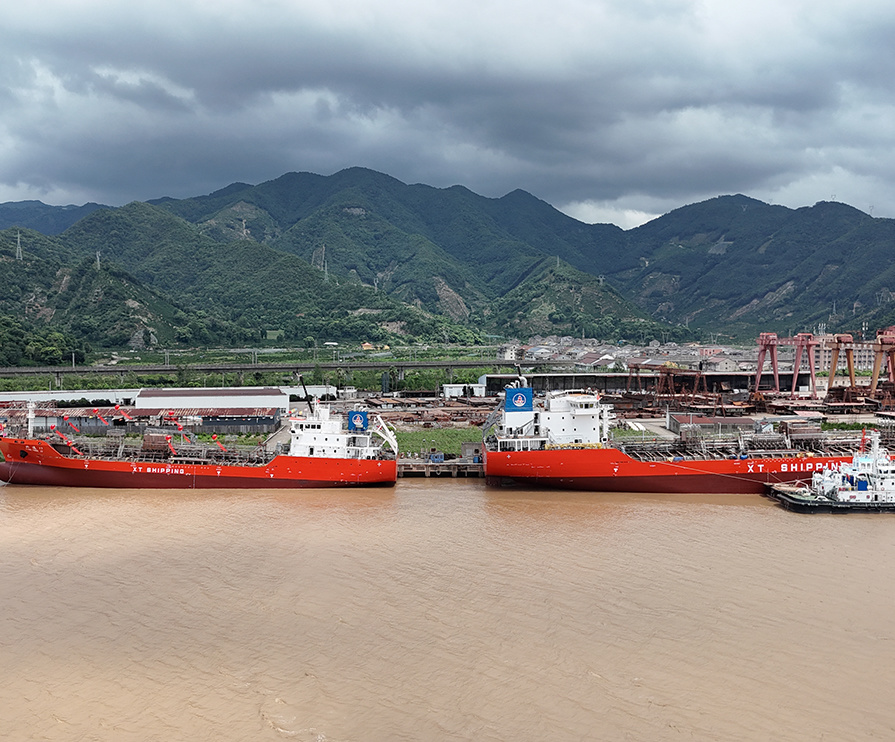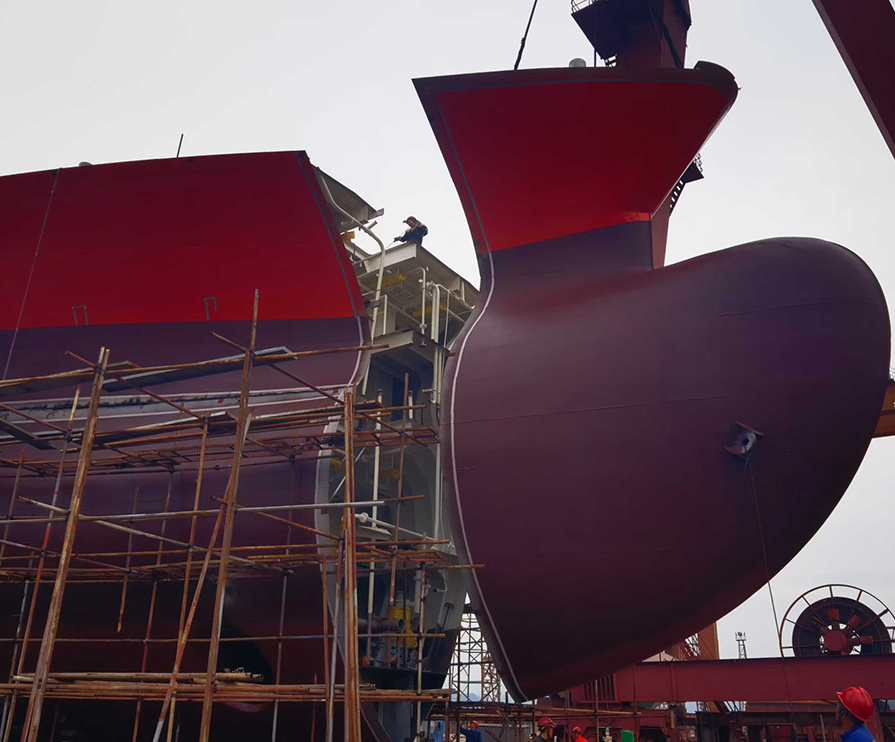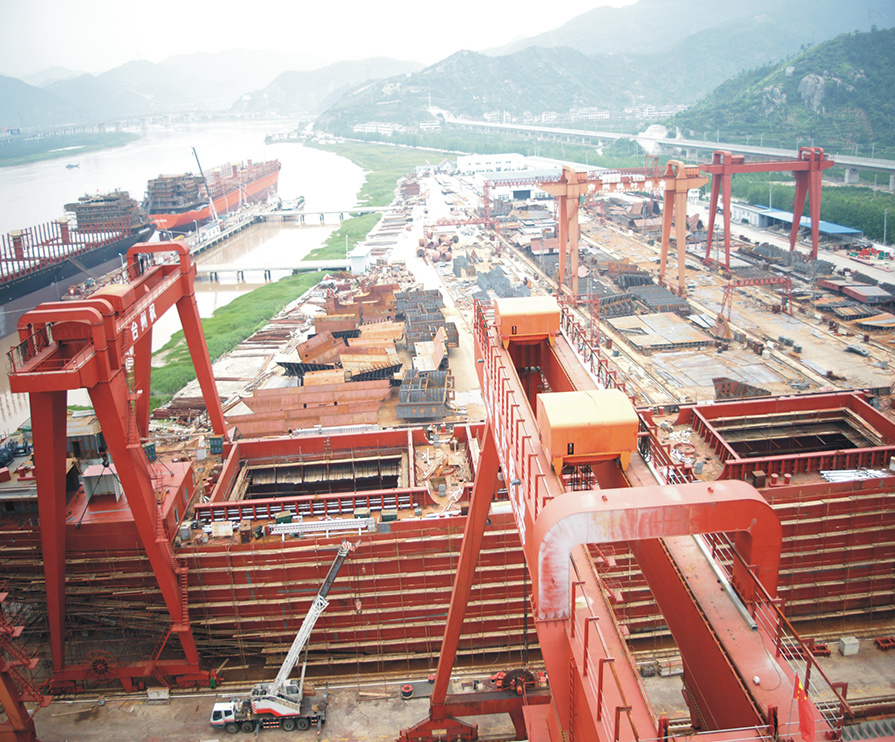

Digital Shipbuilding
"Digital shipbuilding" is a concentrated manifestation of the development of modern technology in the field of shipbuilding: shipbuilding products are large-scale engineering products that integrate a wide range of technologies, and shipbuilding enterprises are complex, comprehensive enterprises with complex organizational structures. Ship operation and supporting facilities extend throughout the world. Therefore, the acquisition, processing, and application of the three types of information for manufacturing enterprises (production object information, production resource information, and market and business information) are "the most complex" among many industries. Therefore, the shipbuilding industry is one of the industries that most needs information technology, and it is also the industry that can benefit most from information technology construction.
"Digital shipbuilding" is based on the integration of knowledge in the shipbuilding process, characterized by digital modeling, simulation, and optimization. It integrates information technology, advanced digital construction technology, advanced shipbuilding technology, and modern shipbuilding models into various stages and aspects of the entire life cycle of ship product design, manufacturing, testing and experimentation, management, and maintenance. This allows our ship products to achieve digital design centered on digital modeling and digital prototypes, digital construction centered on production manufacturing and production process digital control, digital testing and experimentation centered on virtual prototypes and digital simulation, and digital management centered on modern shipbuilding models and business process modeling. This enables optimal control of the entire process and system of ship development, design, construction, management, operation, and decision-making activities, enabling our enterprise to obtain maximum economic and social benefits. Achieving "digital shipbuilding" is the direction of development of the shipbuilding industry in the world today.

Green Shipbuilding
"Green environment" has become a "long-term plan for implementing a sustainable development strategy and related to the survival and development of the Chinese nation". In addition to product prices, ship owners also require enterprises to meet international standards in terms of HSE (H-Health, S-Safety, E-Environment), in order to obtain a "green pass" for international trade. HSE has become one of the five equally important factors in the competitive elements of shipbuilding enterprises, along with technology, cost, schedule, and quality, because employees can only build high-quality ships in a good and safe environment. The situation requires shipbuilding enterprises to make the production environment, production methods, and products green in the process of developing the shipbuilding industry.



Lean Shipbuilding
"Lean shipbuilding" is to reduce resource waste and improve resource utilization by eliminating ineffective time (non-value-added parts) in the shipbuilding process, so as to achieve the results of shortening the shipbuilding cycle, reducing shipbuilding costs, increasing shipbuilding output, and improving shipbuilding efficiency. Our implementation of lean shipbuilding involves all aspects of shipyard management, including market development, budget planning, business production, design process, material procurement, human resources, finance, and equipment and safety management.

Standard Shipbuilding
China's shipbuilding industry has shown impressive progress on its way to becoming a major shipbuilding power in the world. As it strives to build its dream of becoming a strong shipbuilding nation, challenges continue to arise. It is a major responsibility for shipbuilders to clearly understand the similarities, differences, advantages, and disadvantages of the industry's level compared to advanced shipbuilding countries like Japan, South Korea, Europe, and the United States, and to improve and innovate, narrow the gap, and surpass the current situation with clear direction and goals. A comprehensive standardization method is a feasible way to improve the technical content of standards and to develop shipbuilding standards using a systematic approach of comprehensive standardization, thereby enhancing industrial quality.



General Assembly Shipbuilding
"Assembly shipbuilding" is very important, benefiting from our introduction of advanced shipbuilding concepts worldwide, realizing a shift from enclosed full-process shipbuilding to open-assembly shipbuilding. "Assembly shipbuilding" is hailed as a "revolutionary shipbuilding concept of epoch-making significance." It's like building with blocks; many "building blocks" are made by specialized factories, and the shipyard only needs to assemble these "blocks" into various different shapes in the end. It is precisely because of seeing the gaps and problems that Taizhou Fengye Shipbuilding Co., Ltd., aiming to build a world-class modern shipbuilding enterprise, placed innovation in management models at the forefront of its innovation projects. It established a shift from enclosed full-process shipbuilding to open-assembly shipbuilding, which means mobilizing social forces for shipbuilding, taking out配套 products that can be completed by social forces to the market, and the shipyard performing final assembly, thereby realizing the "diversified investment, socialized production, specialized collaboration, and localized配套 modern shipbuilding concept" for vessel manufacturing.

Taizhou Maple Leaf Shipbuilding Co., Ltd.
Address: Guan'ao Village, Yongquan Town, Linhai City, Taizhou City, Zhejiang Province, China
Tel:+86-576-89395061
Fax: +86-576-89395061



